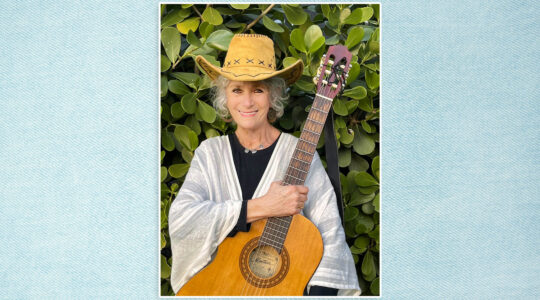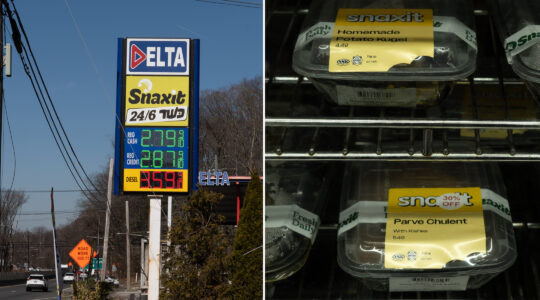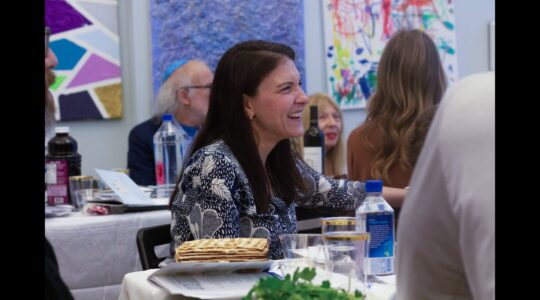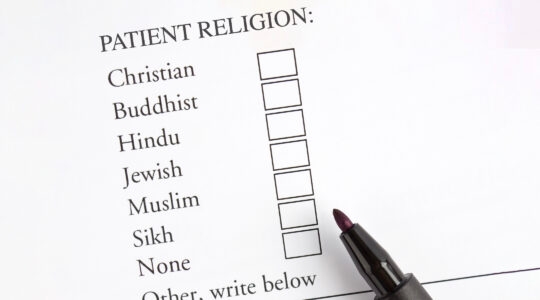For roughly two decades, from the early 1980s to the end of the century, riesling (often known back then as Johannisburg Riesling, after the German village, and more recently as white riesling) was one of the most popular kosher white wine varieties, and for good reason — riesling grapes produce crisp, fruity, refreshing wines that make for particularly good spring and summertime sipping. However, when the kosher wine boom kicked off at the beginning of the 2000s, the demand for kosher riesling diminished, and only a few wineries continued to produce it. (By the time I first wrote about kosher rieslings in 2005, there were only four producers.)
Part of the problem was that in the general U.S. wine market, riesling had fallen out of fashion in part because many wine drinkers associated riesling only with the simple, sweet rieslings that had been so ubiquitous in the 1970s and 1980s. Riesling “is a fine variety, a noble variety [and] there is no reason for it not to be respected,” explains Ernie Weir, the winemaker and owner of Hagafen Cellars, who has been making kosher riesling longer than anyone else (i.e., every year since 1980). “Although there are still those who put their nose up because they think it’s all sweet, they don’t know.”
Riesling grapes have been cultivated for centuries in Germany and Alsace, and more recently wine-growing regions around the world. It’s a versatile grape that can create complex, long-lived white wines with big fruit flavors in a wide variety of styles — from super-sweet dessert wines to bone-dry aperitifs. And today’s kosher consumer can buy both sweet and dry rieslings of excellent quality from a growing number of diverse terroirs. (In preparing this article I tasted kosher rieslings made in Austria, Canada, France, Germany, Israel, California, New York and Washington State.)
In the last few years, kosher riesling’s popularity has been growing rapidly. Weir believes that part of riesling’s insurgent popularity in the kosher world is that “people are tired of other varieties. Chardonnay, for instance, is an easy punching bag.” Weir also notes that “riesling makes many different styles of wine, which makes it very flexible.”
Over the past month I have tasted more than 20 different rieslings. Below are my tasting notes on the 11 best. The wines are arranged from driest to sweetest.
The Drier:
Gefen Hashalom, Weingut von Hövel, Saar Riesling, Kabinett, 2015: Made as part of the Gefen Hashalom (vines of peace), a philo-Semitic organization of German winemakers that is trying to relaunch the German kosher wine trade destroyed by the Holocaust. This medium-bodied, dry, straw-colored riesling is finally starting to enter its prime. Look for flavors and aromas of apples, quince, Meyer lemons and tropical fruits interplaying with a luscious, mineral-rich layer. This wine is not well-distributed, but it is worth the effort to seek it out. Drink now until the end of the decade. Score A
Hagafen, Napa Valley, Combsville, Wieruszowski Vineyard, Dry Riesling, 2018: Light-to-medium-bodied, with a dark-straw color, this dry riesling has a delightful bouquet of honeysuckle, lychees and orange blossoms, with a grapey note. Look for flavors of apricots, lychees and tangerines with a light nutty undertone. Crisp, well- balanced and refreshing, this wine should drink well for at least the next three years. Score A-
Koenig, Riesling, Kosher Edition, Alsace, 2017: With a greenish-straw color and a light to medium body, this dry riesling has a lot to offer. Look for flavors and aromas of heather, honeysuckle, orange, lychee and lime. Dry, crisp and well-structured, this wine should drink well for the next 18 months. Score B+
Carmel, Riesling, Galilee, Kayoumi Vineyard, 2017: Made from riesling grapes grown in a vineyard located 2,500 feet above sea-level, and then cold fermented in stainless steel vats. This dry, crisp, medium-bodied, straw-colored wine has a rich and satiny mouthfeel. Look for flavors and aromas of kumquats, longans, guavas and apples, a note of browned butter and hints of leather and spice. Drinking well now, this wine should be consumed within the next 18 months. Score A-
Tzafona, Cold Climate Riesling, Niagara, 2017: While many don’t think of Canada as “wine country,” our neighbors to the north actually produce roughly 60 million liters of wine each year (about 10 times Israel’s annual production). Light-to-medium-bodied, with a dark straw color, this crisp, just-off-dry riesling has a floral nose with elements of apricot, honeysuckle and papaya. Look for flavors of oranges, lychees, guavas and apples with a light hint of allspice, and a touch of honey on the finish. This is the best vintage I’ve tasted of this wine to date. Dink now until the end of 2022, and perhaps longer. Score A-/B+
Pacifica, Evan’s Collection, Riesling, Washington State, 2017: This semi-dry, light straw-colored riesling has a tropical bouquet of kiwi, rambutams, apples and limes. Look for flavors of apples, limes, kiwis and pears. With crisp acidity, this wine is well-structured and should drink well for the next two years. Score B+
Hagafen, Riesling, Lake County, Robledo Ranch, 2019: Produced with roughly 2 percent residual sugar, this wine sits on the cusp between sweet and dry. The luscious bouquet is redolent of honeysuckle, with whiffs of lychee, cantaloupe and honey. Look for flavors of lychees, cantaloupe, honeydew, Meyer lemons and honey. Drink now until 2024. Score A-/B+
The Sweeter:
De La Rosa 613, T-Rosh, Riesling, Austria, 2017: While the label describes this certified organic wine as semi-dry, it strikes me as being just over the border into semi-sweet territory. Tawny straw-colored and light-bodied, this wine has rich flavors and aromas of peaches, apricots, longans, honey and wildflowers. The wine should drink well until 2022, and perhaps as long as 2023. Score B+.
Kishor, Riesling, Galilee, Misgav, 2017: Kishor winery has a unique backstory—it is owned and operated by Kishorit Village, a home for people with special needs. The winery, which opened in 2009, has placed a special focus on developing its white wine portfolio. This bright straw-colored, light-bodied, semi-sweet riesling has a lightly floral nose with honeyed notes. Look for flavors of peaches, lemons, tangerines and honey, with a strong note of leather. Drink within the next year. Score B/B+
Hagafen, Napa Valley, Combsville, Wieruszowski Vineyard, Riesling, 2019: This is Hagafen’s sweetest expression of riesling. Medium-bodied, luxurious, sweet and tawny straw-colored, this riesling has a tropical nose of passionfruit, peaches, pineapple, honey and orange blossoms. Look for flavors of apricots, peaches, pineapple, lychees and honey. Drink within the next three years. Score B+
Hagafen, Late Harvest, White Riesling, Monterey County, 2017: This tawny-colored, medium-to-full-bodied dessert-sweet wine (weighing in at 12 percent residual sugar) has a satiny mouthfeel and a floral nose with whiffs of pears, nectarines, baked apples, dried figs and honey. The rich flavor has elements of pears, nectarines, candied orange peel and pineapple with long honeyed notes. While very enjoyable, this wine would need just a bit more acid to achieve excellence. Drink within the next four years. Score B+
Please note that riesling (or sometimes white riesling) — the appellation Johannisberg is now reserved for wines from Rhine — should never be confused with Emerald Riesling, a riesling and muscadelle crossbreed grape which is widely planted in Israel, but rarely produces wines of the same quality as true Riesling.
The New York Jewish Week brings you the stories behind the headlines, keeping you connected to Jewish life in New York. Help sustain the reporting you trust by donating today.




